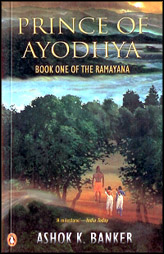Karmabhoomi is set in the Uttar Pradesh of the 1930s. By the beginning of the 20th century, Islam and Hinduism had coexisted in India for over a thousand years. Barring the occasional outbursts of violence, the two religious communities had lived together peacefully and shared strong social bonds except marriage. English education, however, drove a wedge between the communities. India of the early 1930s consisted of a great mass of poor and illiterate people who were exploited by the rich and powerful, irrespective of caste or religion. The author has sympathy for these poor and toiling masses are clearly reflected in his writings. It is against this backdrop that Premchand wrote Karmabhumi.
Munshi Premchand was born in Dhanpat Rai Shrivastava on 31 July 1880 in Lamhi village near Varanasi, India. He began his writing career in 1901. His first short novel, Asrar e Ma’abid (Secrets of God’s Abode), written in Urdu was published in a weekly between 8 October 1903 to February 1905. He wrote on a variety of topics including prostitution, poverty, dowry, child widowhood, and feudal system, using his works as a vehicle for arousing public awareness. He was the first Hindi author whose works featured social realism. Premchand has penned down hundreds of short stories, more than a dozen novels, plays, and several critical essays. His most celebrated works include Vardaan (1912), Seva Sadan (1918), Premashram (1922), Rangbhoomi (1925), Nirmala (1927), Pratigya (1927), Gaban (1931), Karmabhoomi (1932), Godaan (1936). Premchand breathed his last on 8 October 1936. One of the most influential writers of Indian literature, his works continue to remain popular and are translated in various foreign languages across the world.
You need to log in to Rate the book








































